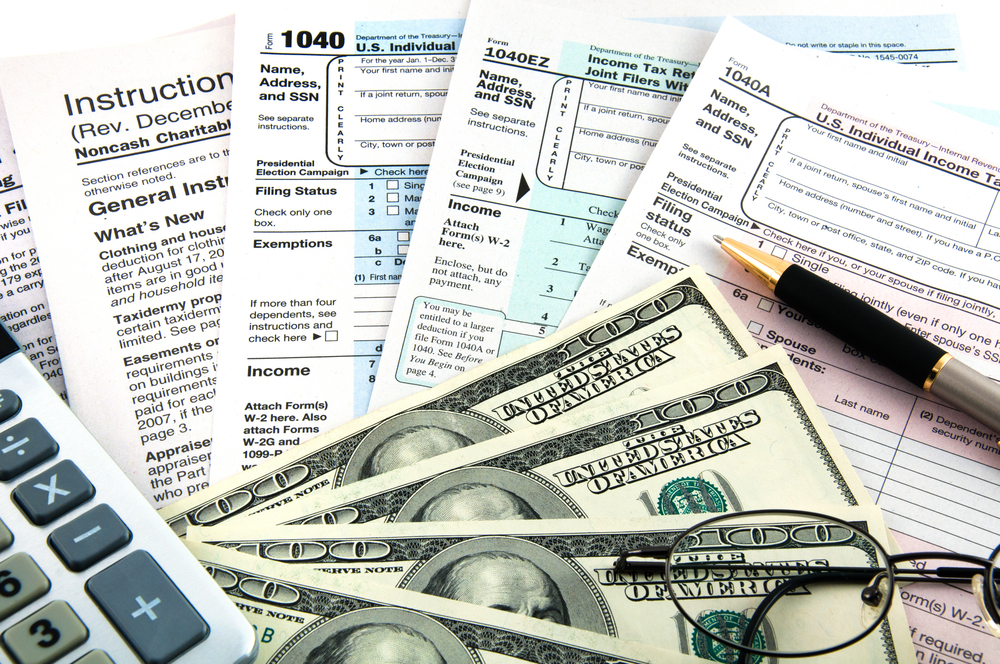Wow! Your responses to my Part 1 article about the new tax proposal last week were incredibly strong.
The comments were overwhelmingly opposed to the new plan.
Douglas said, “Seems like a bunch of arbitrary changes for no good reason other than to line the pockets of the wealthy more. This administration is desperate to get something passed, regardless if it makes sense for the nation.”
Marilyn wrote, “Whenever they talk tax cuts, you can bet that the middle class is going to be the hardest hit. The Republicans take from the middle class and give to the rich. The Democrats take from the middle class and give to the poor. Maybe we should do away with the income tax and switch to a national sales tax you would pay according to what you spend.”
But there were some that think the plan will be good for America.
Noam stated, “The deficit may increase temporarily, but increased economic activity, repatriation of trillions of dollars, etc., will DECREASE the deficit. Death tax? The rich don’t pay it anyway due to estate planning.”
And Rebecca said, “I think this tax plan is a huge step in the right direction.”
Last week, I discussed how some facets of the new tax plan would affect individuals. Now let’s look at the impact it will have on businesses and the stock market.
The Good
The corporate tax rate will fall to 20% from the current 35%. That’s positive. It will make America more attractive to companies. Perhaps we’ll no longer see American corporations flee to the shores of Bermuda, Ireland and other places for tax purposes.
That being said, very few companies actually currently pay 35% tax on their income.
According to the Congressional Budget Office, after all deductions and credits, American companies actually paid an average tax rate of 18.6%.
The Bad
Companies with foreign profits will be permitted to repatriate the money back into the United States at a discounted 12% tax rate.
It is estimated that American companies are holding $2.6 trillion overseas. Those funds should be back in the U.S. where they belong. I have absolutely no problem with incentivizing companies to move that money back home.
However, the repatriation is unlikely to have the effect on the economy and jobs that the president and House Republicans proclaim.
In 2005 and 2006, $312 billion was brought back to the U.S. For every $1 repatriated, $0.92 was given back to shareholders.
And companies are sitting on plenty of cash here in the United States.
More than $1 trillion in cash is being held by just 24 S&P 500 companies. If these businesses wanted to spend cash to build infrastructure or create jobs, they certainly could, even without repatriating overseas funds.
For example, according to Bloomberg, Oracle (NYSE: ORCL) has $66 billion in cash, with $54 billion held by foreign subsidiaries. That’s $12 billion that’s already here in the U.S. If Oracle wanted to build a new domestic manufacturing facility, it would have no problem writing a check to cover all of the expenses.
The repatriated money will be used to buy back shares and increase dividends (which I’m certainly a fan of). But it won’t lead to much of an increase in investment or new jobs.
And Noam’s argument above about lowering the debt doesn’t hold water.
Even if all of the $2.6 trillion was brought back and taxed at 12%, it would raise $312 billion in tax revenue, barely putting a dent in the additional $1.5 trillion debt caused by the tax plan – even if you included taxes on dividends that were generated as a result of the repatriation.
Again, I believe the money held in other countries should be repatriated. But trying to disguise it as economic stimulus is misguided. It will be a big bonus to investors, as it was in 2005 and 2006.
The Ugly
The new tax plan makes pass-through income more attractive by lowering the tax rate to 25%.
Pass-through income is income that “passes through” a company directly to the owner of the business. For example, a company owned by a sole proprietor makes a profit of $500,000. The $500,000 would pass through to the owner. The taxpayer would not pay a corporate income tax but would now pay tax on pass-through income at a maximum of 25% rather than the top tax rate of 39.6%.
This is a small positive for truly small business.
But it’s a giant windfall to the wealthy and to big businesses that are set up as partnerships or S corporations .
Someone in the top 39.6% tax bracket who generates considerable income from investments in partnerships or S corporations would now be taxed at 25% instead of 39.6%.
Pass-through income is primarily the domain of the wealthy. About 70% of partnership income is earned by the top 1%, while the bottom 80% earns no pass-through income. In fact, only about 11% of the top 1%’s income is earned through wages and salary.
If this rule was truly about helping small business, the government would cap the pass-through limit at $1 million or even $2 million. That way small business owners would get a break but we’d put a dent in that extra $1.5 trillion in debt this plan will add.
Conclusion
Many aspects of the new tax plan are positive for investors. Companies will have lower tax rates. They’ll be able to bring back overseas cash, which will very likely be used to buy back shares or pay dividends. And companies that are set up as pass-through entities will allow their investors to pay lower taxes on the income generated.
Additionally, there is no change to the capital gains or dividend tax rate.
But similar to the changes to individuals’ taxes, the lower and middle classes will benefit a little, while the very wealthy will benefit a lot.
What do you think about the changes to the tax plan? Leave your comments below.
Good investing,
Marc
